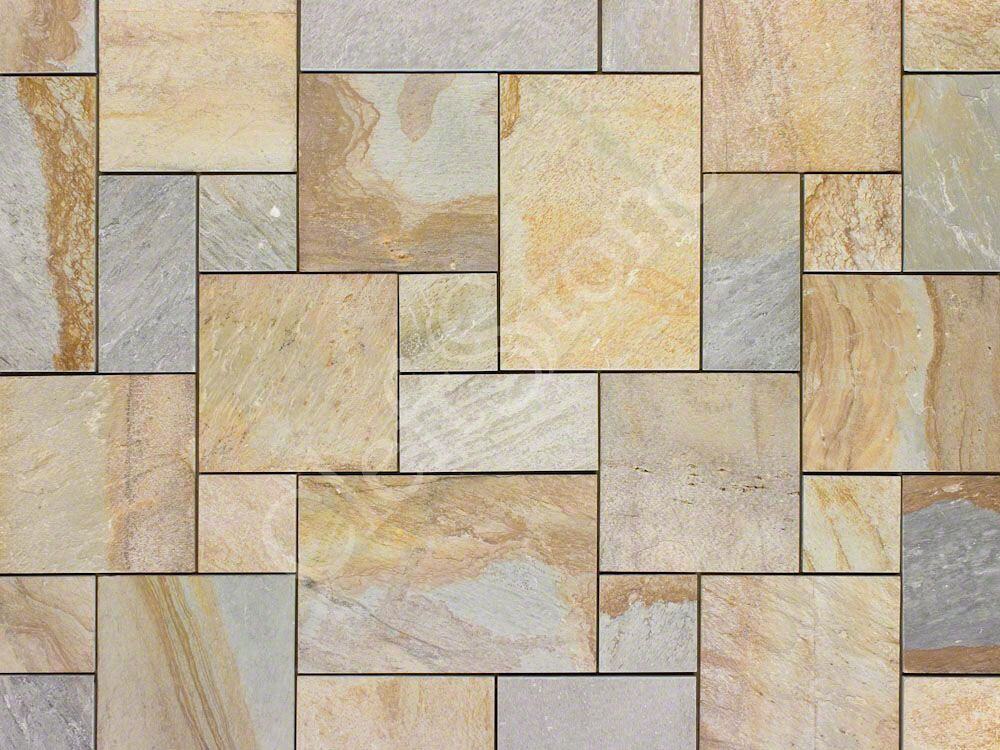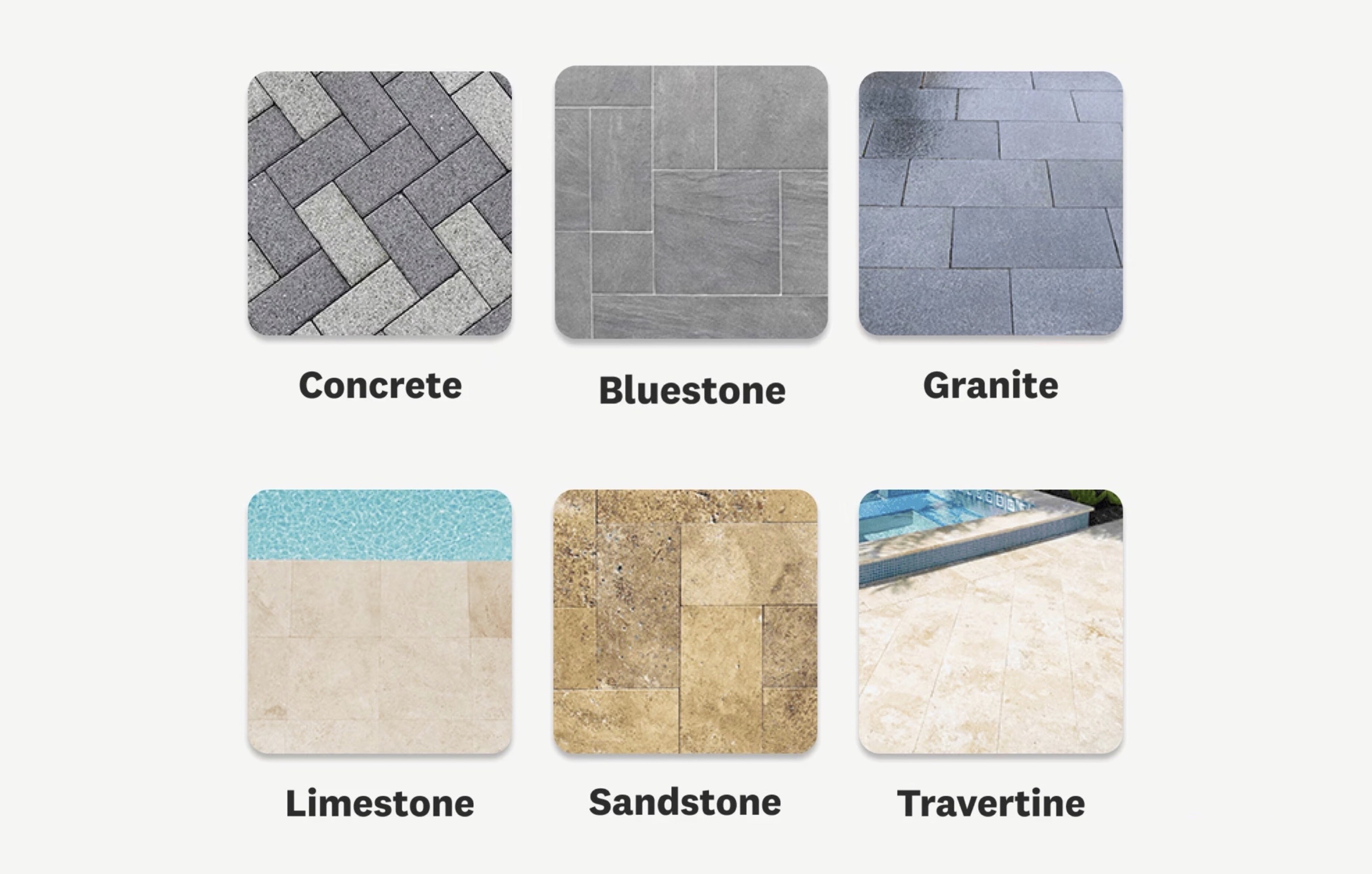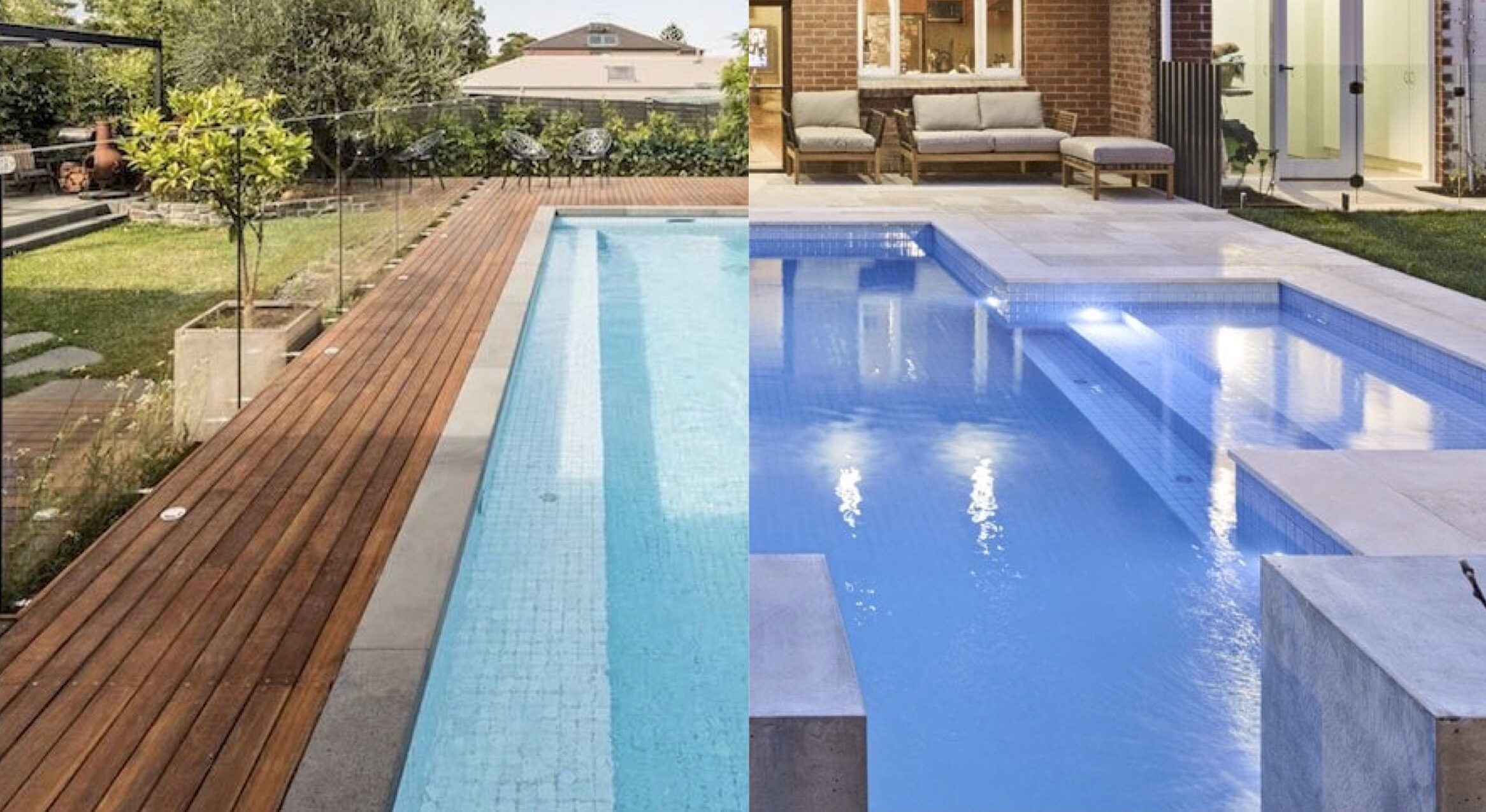Choosing the right concrete finish for your garden project
May 22nd, 2024
5 min read
By Andrew Whyte

Are you planning to landscape a new garden at your home? Is your project likely to include concrete surfaces? Are you unsure which concrete finishes are best for which applications? Would you like some advice to make sure you don't make the wrong choice?
We've laid down every kind of concrete surface you can imagine over the past 30 years of landscaping. Many new trends in concrete surfaces have emerged over that time, so we always remain current with the latest.
In this article, we'd like to share with you our knowledge and experience regarding concrete surfaces. So when you get to the end you'll be much more informed and confident of your choice.
Of all the elements of a new garden you could install, concrete is one of the most permanent. It's not an easy thing to replace if you get it wrong.
You can often change the surface finish of your concrete if you find you've made the wrong decision but it's much better to get the decision right in the first place. You'll save yourself a lot of time, money and heartache.
There are many different types of concrete finishes, some of which can seem very similar. We hope this guide will help steer you towards the right choice.
Honed Concrete

A honed concrete finish is created using a grinding machine to go over the concrete and make it smooth, but not so smooth as to be slippery.
Honed concrete is sometimes confused with polished concrete which is similar. But polished concrete is created by a different process and has a finish applied which makes it more slippery.
Tip: A honed concrete finish is best for outdoor use, while polished concrete is best for indoor applications.
Pavilion Finish Concrete
Pavilion Finish Concrete is first ground
in the  same way as honed concrete. However, the surface is then acid etched to provide a much improved anti-slip finish.
same way as honed concrete. However, the surface is then acid etched to provide a much improved anti-slip finish.
In the image shown here, you can see an example of it being used around a pool. Note that it has a very similar look to honed concrete.
Exposed Aggregate

Exposed aggregate is a popular choice in concrete finishes. (Aggregate refers to the small stones you find in the concrete mix.)
This aggregate is 'exposed' by pressure washing which allows it to protrude slightly from the surrounding cement.
Exposed aggregate is commonly used for driveways and paths as it is an economical surface that is highly durable. It is considered non-slip due to its rough, slightly irregular surface.
Stipple Finish

This is another of the more popular concrete finishes, also commonly used for driveways and paths.
Even more economical than exposed aggregate concrete, stipple finish concrete is useful along the sides of a house where traffic is low and the surface is chosen more for its utility than its aesthetic.
The great thing about this finish is that you can add colour to the concrete mix to create a more desirable finish.
Broom Finish
 Broom finish concrete is perhaps the simplest of all. As the name suggests you simply run a broom over the surface of the concrete to give it a rougher finish than if you smoothed it off with a trowel.
Broom finish concrete is perhaps the simplest of all. As the name suggests you simply run a broom over the surface of the concrete to give it a rougher finish than if you smoothed it off with a trowel.
Polished Concrete

As previously stated, polished concrete goes through a 2-stage process.
First, it is ground to a smooth surface by using progressively finer and finer grit abrasives. Then a chemical hardener is applied to the concrete which helps to fill in surface irregularities. It is then polished again to a high sheen finish.
Polished concrete is loved for its high gloss, smooth reflective surface and is considered probably the most aesthetic concrete look.
It is best suited to internal floors.
Burnished Finish

A burnishing machine isn't as powerful as a concrete grinder so when burnished concrete is created the aggregate inside the concrete isn't exposed. This creates a more subtle look with a smoother feel.
Burnished concrete is often used as a feature in outdoor kitchens like the one shown here.
It is also commonly used for large feature steps in a garden or for bench seating.
Which is the best concrete surface around a pool?
All the water that splashes around outside a pool can make any surface slippery. Of all the choices for a concrete finish around a pool, Pavilion Finish is probably the best.
It has a much higher anti-slip rating than honed concrete which means you will have less concern watching your kids running around the pool.

Which concrete finishes are most subject to cracking?
All types of concrete finishes are subject to cracking to a greater or lesser degree. The amount of cracking in concrete can be affected by many factors.
The weather can affect how long it takes for the concrete to cure. Concrete expands in the heat and cures faster than when it is cold. If the weather alternates between hot and cold during curing, cracking may occur.
Ground movement under the concrete can create cracks. If laid on sand rather than clay, the concrete will be more stable and less prone to cracks.
The skill of your concreter can also affect if your concrete will crack. Cracks can also occur if they have not put down sufficient expansion joints to allow the concrete to expand and shrink with changes in temperature.
What are called 'hairline cracks' in concrete are considered normal and are acceptable under Australian Standards. Some degree of fine cracks are acceptable and do not mean your concrete is of poor quality. Hairline cracks should be considered acceptable in all concrete finishes.
What's the difference between a good and bad concrete pour?
Ultimately a good concrete finish can depend a lot on having a good concrete pour in the first place. And a good concrete pour depends on having a good concreter.
We would urge you to be wary of anyone who offers you a quote for concreting that seems suspiciously cheap.
The way to tell whether or not you have contracted the right concreter is to look at how they prepare for the concrete pour. The following two examples show the difference between a professional concreter and someone who is below standard.
This first image shows the right approach. Expansion foam has been laid against the side of the house. Compacted crushed rock has been put down as a base for the concrete. Most importantly there are 'bar chairs' which are little plastic spacers that hold the steel reinforcing above the ground so that it is in the right position for when the concrete is poured over it. This means the steel reinforcing actually sits within the core of the concrete rather than just at the bottom of it.

This second image shows a less-than-professional concreter at work. The base for the concrete has an irregular surface. But most importantly the steel reinforcing is simply lying on the ground meaning it will do little to actually reinforce the concrete. This will make the concrete structurally unsound, weak and prone to severe cracking.

What if your concrete has airholes?
It is common for concrete to have small, occasional air holes or air pockets in it. This does not affect the structural integrity of the concrete.
If you discover these holes after the concrete pour they can be filled with grout to provide a smoother, easier-to-clean surface in the future. You can do this before honing the concrete.
When giving concrete a Pavilion Finish you don't normally need to fill any small air holes as the etching will likely remove them.
Either way, the process of sealing the concrete will tend to fill these small air holes or pockets anyway so they are of no real concern.

Maintaining your concrete finish
Any sealer applied to your concrete in the finishing process will wear down over time. You will most likely need to reapply the sealer every few years but this will depend on where the concrete has been laid and how heavy the traffic over it is.
Also what type of finish you have chosen can affect how long the sealant lasts.
We recommend you discuss how regularly to reseal your concrete with your landscaper when the concrete is being laid.
We regularly recommend either a honed or pavilion concrete finish to our clients. Both provide a very clean, modern look, that is hard-wearing and is very pleasing to the eye.
If you would like to find out more about various other aspects of landscaping for your garden, please feel free to read other articles in our information hub.
If however you'd like to start chatting with us about an upcoming project, please feel free to click here to start your journey:
Articles covering Landscape Design and Construction in Melbourne...
How to calculate an accurate budget for landscaping
What is the true value of a landscape designer?
Is Whyte Gardens the right choice to landscape your garden?
Founder of Whyte Gardens



